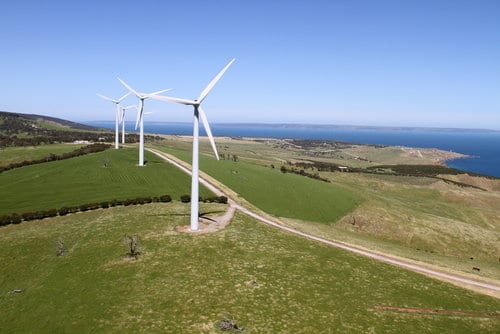
We are in the midst of an energy transformation. South Australia is working hard to drive renewable energy uptake, and will likely meet its target of 50% renewable energy this year, nearly a decade ahead of schedule, and has a further goal of getting as close to 100 per cent renewable energy as possible.
This places South Australia on the front line of a transformation that will by necessity flow much deeper through the energy networks of the entire nation.
South Australia is leading the nation with 41 per cent of their energy coming from renewable sources, and more on the way.
Last week a joint study released by the Australian Energy Market Operator (AEMO) and ElectraNet, operator of South Australia’s transmission network, set out the limits to secure operation of our power system. It identified legitimate concerns about stretching the energy system under its current outdated infrastructure. However, the problem has occurred because insufficient effort has gone into modernising the system and adapting to the challenges of a renewable energy future.
The report into South Australia’s energy infrastructure from AEMO and Electranet should be received with optimism and encouragement. We have a State that is already world leading in embracing renewable technologies.
Premier Jay Weatherill has pointed to the exciting opportunities for jobs, capital investment and advanced manufacturing industries that lie ahead as the State transitions to more renewable energy.
The opportunity to drive jobs and investments for the future while supporting communities to adjust is also very clear. Yet at present, government investment, market settings and policy continue to preference an outdated energy network, when instead they should be focussed on the changes happening now.
Last December at the Paris COP21 climate conference, 195 countries came together to form an agreement to stop global warming, and committed to cut pollution to net zero before the end of the century. The outcomes from Paris are clear. All countries will need to do their part to cut pollution, and in Australia that means replacing our old, inefficient and polluting power stations with the clean energy of the future.
The good news is that industry is already moving. Andrew Vesey, Chief Executive of Australia’s biggest polluting company AGL recently said: “We need to be out of the CO2 emissions business… We’ve done a lot of thinking around this and we believe our view of the future will be restraints on carbon emissions.”
Australia has one of the highest average levels of solar radiation per square metre of any continent in the world and some of the best wind resources. We have all the clean renewable energy we need, and new technologies can assist develop a baseload supply such as better, cheaper battery storage that is rapidly coming into the market.
A good example of a technology ready to be embraced is concentrated solar thermal power that combines storage to achieve baseload power. A project proposal on the table would bring clean energy and new jobs to help replace the coal-fired generators in Port Augusta that are closing this year. This would be the first of its kind in Australia and deserves further support.
Moreover, the significant drop in the cost of renewable energy technologies is changing the game – new renewable energy facilities are now being built at lower cost than would be required for new fossil fuel facilities.
Origin’s CEO, Grant King, recently estimated that the cost of large-scale solar in Australia was dropping to around $80/MWh. At this price it would be cheaper than most gas-fired generation and even cheaper than wind energy which has until recently been the cheapest renewable energy source in Australia.
We now need leadership at all levels to ensure Australia’s energy infrastructure is up to the task of transforming to a clean energy future. Surely, with all of Australia’s ingenuity and innovation, the task of achieving a goal of a 100 per cent renewable energy is achievable if there’s the will to get there.
Suzanne Harter is a climate change campaigner for the Australian Conservation Foundation







